There's nothing quite like a perfectly baked potato. It's a humble dish that delivers pure comfort, whether you're enjoying it on a chilly evening or as a side to a hearty meal. That fluffy, pillowy interior, the crispy skin, the endless topping possibilities – it's a symphony of textures and flavours that never fails to please. But achieving that perfect bake can sometimes feel like a culinary mystery. You might end up with a soggy mess, a rock-hard spud, or even worse, a potato that's cooked unevenly. Fear not, fellow potato enthusiast! I'm here to share my tried-and-true methods for consistently achieving those golden, fluffy baked potato dreams, all while wrapped snugly in foil at 350°F. Let's dive in!
(Part 1) The Essential Ingredient: Picking Your Potato
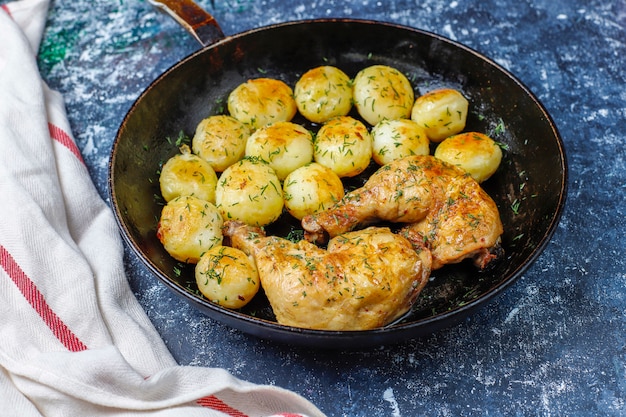
The journey to the perfect baked potato begins with the right spud. Not all potatoes are created equal, and choosing the right one is the first step to a delicious outcome. So, let's talk potato selection!
The Power of the Russet
russet potatoes, with their signature rough skin and oblong shape, are my go-to for baking. They're known for their high starch content, which translates into that fluffy, airy texture we all crave. When choosing russets, look for potatoes that are firm, smooth, and free of any blemishes or soft spots. A bit of rough skin is perfectly fine – it just adds character! Think of it as a badge of honour, a testament to a potato's journey from the earth to your plate.
Beyond the Russet: Exploring Other Options
While russets are my personal favourite, there are other contenders for the perfect baked potato. yukon gold potatoes, with their vibrant golden skin and slightly sweet flavour, are a delightful alternative. They offer a unique creamy texture that complements a variety of toppings. And if you're after a more creamy texture and a subtle earthiness, consider using a baking potato or a red potato. Experiment and discover what tickles your taste buds!
The Size Matters: Striking a Balance
When it comes to size, I usually aim for medium-sized potatoes, roughly the size of a softball. These bake evenly and provide a good amount of filling space. Larger potatoes might take a bit longer to cook, and smaller ones may cook too quickly and risk drying out. The key is to find a balance, ensuring that your potatoes bake through without becoming overly dry.
(Part 2) The Prep Work: A Simple Yet Crucial Step
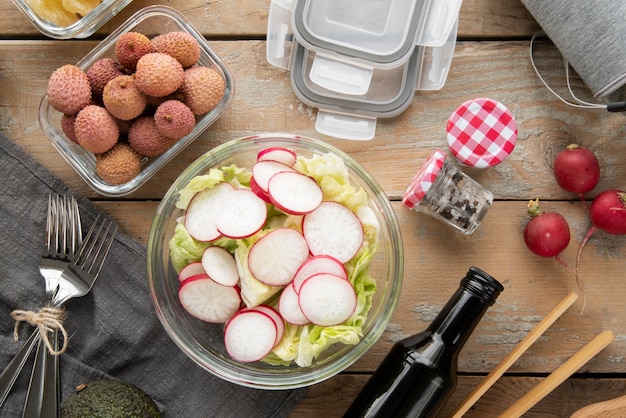
Once you've got your perfect potatoes, it's time to give them a little TLC before they hit the oven. This prep work might seem minor, but it makes a real difference in the final result. It's like giving your potato a spa treatment, prepping it for its starring role in your culinary masterpiece.
The Wash and Scrub: A Clean Slate
First things first, give those potatoes a good scrub with a vegetable brush. You want to remove any dirt or debris, but don't worry about scrubbing away the skin completely. That lovely crispy texture comes from the skin itself! Remember, we're aiming for a clean slate, not a completely bare potato. If you're using potatoes with a waxy skin, like red potatoes, you can give them a quick rinse and leave them as they are.
The Prickly Business: Poking Those Potatoes
Now comes the important step of piercing the potatoes. This might sound odd, but it's crucial. As the potatoes bake, steam will build up inside. If you don't make a few holes, the potatoes could explode in the oven, making a mess and potentially causing harm. Imagine a potato bomb, a culinary catastrophe! You can use a fork, a skewer, or even a toothpick – just make sure there are a few holes on each potato. Let the steam escape safely, and avoid any unexpected explosions.
(Part 3) Foil Wrapping: The Art of Enclosing Flavour
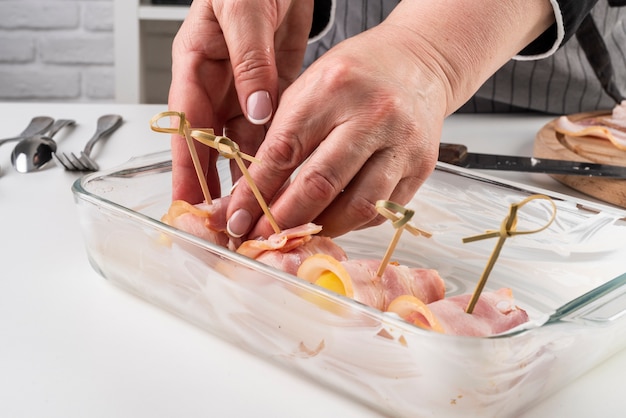
The foil wrapper isn't just a practical way to keep things clean; it also plays a vital role in creating that perfect baked potato. It's like a little cocoon, protecting and nurturing the potato as it transforms in the oven. Here's my take on the art of foil wrapping:
A Double Layer for Maximum Moisture: A Steamy Sanctuary
I always wrap my potatoes in two layers of foil. The double layer helps to create a steamy environment, which helps the potatoes cook evenly and keeps them moist. It's like creating a little steam room for your potato, allowing it to cook gently and retain its moisture. It also helps to prevent the skin from drying out too much, ensuring that you get that delightful crispy texture.
Folding for a Secure Seal: Locking in the Goodness
To wrap my potatoes, I start by placing them on a piece of foil, large enough to fully enclose the potato. Then, I fold the sides up and around, creating a pouch. Next, I fold the top and bottom edges inwards, ensuring that the edges overlap tightly to seal in the steam. I often tuck the edges under the potato for an extra secure seal. Think of it as creating a little treasure chest, protecting the precious contents within.
A Touch of Flavour: Herbs and Spices
While not necessary, I love to add a little something extra to my foil packets. I sometimes sprinkle in a few sprigs of rosemary or thyme, a pinch of salt, or a sprinkle of paprika. These herbs and spices add a subtle flavour that complements the potato beautifully. It's like adding a touch of magic, enhancing the natural flavour of the potato and creating a symphony of aromas.
(Part 4) The Oven Time: Baking at 350°F
Now for the crucial part: baking those beauties to perfection. While baking time varies depending on the size of the potatoes and your oven, the general guideline is around 45-60 minutes at 350°F. Here's how I approach the baking process, ensuring that my potatoes emerge from the oven golden brown and perfectly cooked.
Oven Preheating: A Crucial First Step
Before you even think about putting those potatoes in the oven, make sure it's preheated to 350°F. This ensures that the potatoes cook evenly and don't end up undercooked. It's like giving the oven a head start, getting it ready to work its magic on your potatoes. I usually give the oven about 15-20 minutes to reach the right temperature.
The Middle Shelf: Your Potato's Happy Place
Once the oven is preheated, carefully place your foil-wrapped potatoes on the middle rack. This ensures that they receive consistent heat from all sides. If you're baking multiple potatoes, try to spread them out so they have enough space to cook properly. Don't overcrowd the oven! Think of it as giving each potato its own space to breathe and cook evenly.
(Part 5) The Tell-Tale Signs: Checking for Doneness
After about 45 minutes, it's time to start checking for doneness. There are a few ways to tell if your potatoes are ready, ensuring that they're cooked through without becoming overdone.
The Squeeze Test: A Gentle Approach
One way is to gently squeeze the potatoes. If they feel soft and give way easily, they're probably done. Be careful not to squeeze too hard – you don't want to squish them. If the potatoes feel firm, they need a bit more time in the oven. Think of it as a gentle nudge, checking for that soft, yielding texture.
The Fork Test: A More Accurate Method
A more reliable method is to use a fork. Insert the fork into the potato. If it goes in easily and comes out clean, the potato is cooked through. If you meet resistance, give it a few more minutes in the oven. It's like giving the potato a little poke, checking for that tender, cooked-through center.
(Part 6) The Resting Ritual: A Step for Fluffy Goodness
Once your potatoes are cooked, don't rush to unwrap them. Let them rest for about 10-15 minutes in the foil. This allows the steam to redistribute, which helps create that fluffy, pillowy texture we all love. It also gives the potato a chance to cool down slightly, making it easier to handle. Think of it as a little pause, allowing the potato to relax and release its full potential.
(Part 7) The Unveiling Ceremony: Revealing Perfection
After those crucial resting minutes, it's finally time to unveil your masterpiece. Unwrap those potatoes carefully, releasing that delicious aroma of baked potato goodness. Take a moment to appreciate the golden-brown skin and the gentle puff of steam as you unwrap them. It's like opening a treasure chest, revealing the culinary magic within.
The Crispy Skin: A Delectable Treat
One of my favourite things about baked potatoes is the crispy skin. It's like a crunchy, salty treat that complements the fluffy inside perfectly. I always leave a good amount of skin on my potatoes for that extra texture and flavour. If you're not a fan of the skin, you can easily peel it off before adding your toppings. It's all about personal preference! Enjoy that delightful crunch, or embrace the smooth texture of the potato itself.
The Fluff Factor: The Heart of a Baked Potato
Now, comes the moment of truth: scooping out that fluffy interior. Take a fork and gently separate the potato flesh. You'll be greeted with a soft, pillowy texture that practically melts in your mouth. It's the perfect canvas for your favourite toppings, and a testament to your baking skills! It's the moment you've been waiting for, the reward for your culinary efforts.
(Part 8) The Topping Tapestry: A Feast for the Senses
Baked potatoes are like a blank canvas, ready to be transformed into a culinary masterpiece. The topping possibilities are endless, from classic favourites to innovative creations. Here are some of my personal favourite ways to top a baked potato, unleashing a world of flavour possibilities.
The Classics: A Touch of Tradition
There's a reason why certain toppings have stood the test of time. They're simple, delicious, and satisfying. Some of my go-to classics include:
- Butter and Sour Cream: A creamy and tangy combination that's always a hit. The richness of butter combined with the tanginess of sour cream creates a classic flavour pairing that never disappoints.
- Cheese and Bacon: The ultimate comfort food. Choose your favourite cheese, be it cheddar, Monterey Jack, or even a sharp blue cheese, and add some crispy bacon for a salty crunch. This is a combination that evokes pure comfort and satisfaction.
- Chili: A warm and hearty topping that's perfect for a chilly evening. Add a dollop of sour cream or a sprinkle of cheese for extra flavour. The warmth of chili combined with the coolness of sour cream creates a delicious contrast.
The Adventurous: Beyond the Ordinary
If you're feeling a bit more adventurous, there are endless possibilities to explore. Here are a few of my favourite non-traditional toppings, pushing the boundaries of baked potato creativity:
- Roasted Vegetables: Add a burst of colour and flavour with roasted vegetables like broccoli, bell peppers, or asparagus. A drizzle of balsamic vinegar adds a touch of sweetness and tanginess. This is a healthy and flavourful option, introducing a range of textures and colours to your potato.
- grilled chicken or Fish: Top your potato with grilled chicken or fish for a protein-packed meal. A sprinkle of lemon juice and fresh herbs adds a bright and refreshing touch. This is a satisfying and complete meal, combining the warmth of the potato with the freshness of grilled protein.
- Avocado and Salsa: A creamy and vibrant topping that's packed with flavour. The avocado adds a richness, while the salsa provides a spicy kick. A sprinkle of cilantro adds a fresh finish. This is a healthy and flavourful option, combining the creamy richness of avocado with the spicy kick of salsa.
(Part 9) Baking Times: A Quick Reference Guide
To help you navigate those baking times, here's a handy table that provides an estimated baking time for potatoes of different sizes. Keep in mind that these are just estimates, and actual baking times may vary depending on your oven and the type of potato you use. Use this table as a guide, adjusting the baking time as needed. The goal is to bake those potatoes to perfection!
| Potato Size | Estimated Baking Time (at 350°F) |
|---|---|
| Small (less than 4 inches in diameter) | 30-45 minutes |
| Medium (4-6 inches in diameter) | 45-60 minutes |
| Large (over 6 inches in diameter) | 60-75 minutes |
(Part 10) FAQs: Answers to Your Baked Potato Queries
I've compiled a list of frequently asked questions about baking potatoes. I hope this addresses any concerns you may have and helps you bake the perfect spud. Let's clear up any lingering doubts and ensure your potato baking journey is a smooth one.
What if my potato is too hard after baking?
If your potato is too hard, it means it hasn't cooked through properly. It's likely that you didn't bake it long enough, or your oven wasn't hot enough. You can try returning it to the oven for a few more minutes, or even wrapping it back in foil and baking it for another 10-15 minutes. Don't give up on that potato just yet! A little extra baking time can often transform it into a fluffy delight.
Can I microwave potatoes before baking?
Yes, you can definitely microwave potatoes before baking. This will help reduce the overall baking time. Microwave the potatoes on high for 5-7 minutes, then transfer them to the oven to finish baking. Just be sure to pierce them with a fork before microwaving to prevent them from exploding. This is a time-saving technique, but remember to pierce those potatoes! It's a safety precaution, preventing any potato explosions in your microwave.
Is it okay to bake potatoes at a higher temperature?
While you can bake potatoes at a higher temperature, I don't recommend it. Baking at 350°F ensures that the potatoes cook evenly without drying out. At higher temperatures, the potatoes might cook too quickly on the outside and not cook through in the centre. They might also become dry and crumbly. Stick to 350°F, ensuring a consistent and evenly cooked potato.
What if I don't have foil?
If you don't have foil, you can bake potatoes directly on a baking sheet. Just make sure to pierce them with a fork and to brush them with a little bit of olive oil. This will help them cook evenly and prevent them from drying out. It's not ideal, but it works in a pinch! The olive oil will help create a crisp skin and prevent the potato from drying out.
What happens if I overcook my potatoes?
Overcooked potatoes will be dry and crumbly. The skin will be tough and hard to eat. If you've overcooked your potatoes, there's not much you can do to salvage them. It's best to start over with fresh potatoes. The key is to check those potatoes regularly, ensuring that they're cooked to perfection without becoming overdone.
Everyone is watching

How to Cook Frozen Lobster Tails Perfectly: A Step-by-Step Guide
RecipesLobster. Just the word conjures up images of lavish meals, special occasions, and a taste of luxury. But let's...

Pigs in a Blanket Cooking Time: How Long to Bake for Perfect Results
RecipesAh, pigs in a blanket. Just the name conjures up images of those delightful little parcels of crispy pastry en...

Pork Fillet Cooking Time: How Long to Cook It Perfectly
RecipesPork fillet, or tenderloin as it's sometimes called, is a real favourite in our house. It's so versatile, and...
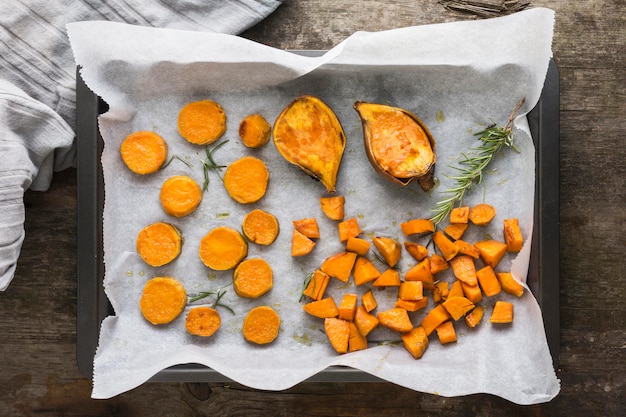
The Ultimate Guide to Cooking Sweet Potatoes: From Roasting to Mashing
RecipesSweet potatoes. Just the name conjures up images of warm, comforting dishes, bursts of vibrant color, and a to...
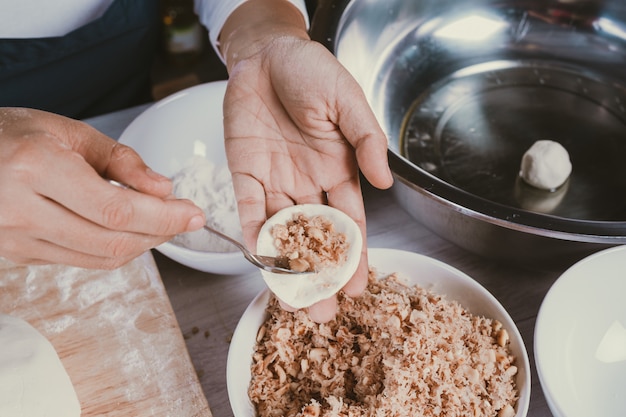
The Ultimate Guide to Tender, Juicy Pulled Pork
RecipesRight, let's talk pulled pork. It's one of those dishes that just screams "comfort food," doesn't it? I mean...
